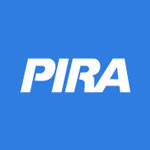 NYC-based PIRA Energy Group reports that oil market rebalancing has begun, price lows are in. In the U.S., there was a flat profile for stocks of four major oils. In Japan, crude runs declined, imports plunged and stocks drew. Specifically, PIRA’s analysis of the oil market fundamentals has revealed the following:
NYC-based PIRA Energy Group reports that oil market rebalancing has begun, price lows are in. In the U.S., there was a flat profile for stocks of four major oils. In Japan, crude runs declined, imports plunged and stocks drew. Specifically, PIRA’s analysis of the oil market fundamentals has revealed the following:
With Oil Market Rebalancing Begun, Price Lows Are in
Oil market rebalancing has indeed begun with the stock surplus about to level off. OPEC/non-OPEC freeze is a change in strategy and positive for prices. Expect a new price anchor of $50/Bbl to be talked about. Prices will move higher like a step ladder, as required supply creation becomes more evident. Refinery margins and runs will generally be healthy through the summer before weakening. Political risks to supply are growing.
How Important Are LNG Price Levels to NBP Price Potential
The last time that storage came out of February at this high of the level was in 2014, which led to all-time storage highs by the end of October of that year. While high storage did not automatically translate into a collapse in spot prices, it is somewhat interesting that spot prices have been on a consistent decline from November 2014 to yesterday (except for February 2015).
U.K. Spark Spreads Remain Weak in Spite of Extremely Tight Market
With the market conditions changing considerably since the Capacity Market was established, the U.K. DECC has launched this week a new consultation with the aim of reforming the Capacity Market design. The proposed changes do not come totally as a surprise, but from a trading standpoint, the proposals do not change the big picture in the electricity market until at least the winter 2017-18, basically leaving the U.K. market still extremely vulnerable, with razor-thin spare capacities through the upcoming winter.
Litigation Around CA Cap and Trade Auction
Auctions have been a key feature of the California’s cap and trade program, with the auction reserve price offering guidance for a price floor in the secondary market. The ability of the state to sell allowances via auction has been under legal attack with news on developments expected soon. PIRA believes that in the event of an adverse decision, eventual market impacts may be limited — particularly if the auction of consigned allowances is allowed to continue. We also expect the California legislature would act to explicitly authorize auctions for all allowances. Quebec’s auction would be unaffected by this court ruling and Ontario will be offering a significant part of its cap at auctions when its program is slated to start — though both have significantly lower reserve prices.
Freight Market Outlook
Coming off their best year since 2008, tanker markets in 2016 have turned sharply lower over the first two months. VLCC markets led the slide with rates in the benchmark Mideast/Asia trade plunging by 50% as China reduced crude imports substantially in January from record levels in December and market sentiment turned negative. Rates in the other vessel groups have also registered significant declines since the start of the year. Furthermore, PIRA expects the rise in global stocks will reverse and start to decline in second half 2016, putting additional pressure on tanker rates as volumes contained via slowdown and floating storage start to shrink.
Thermal Coal Market Beginning to Show Signs of Moving Back into Balance
Physical coal pricing was mixed in February, with coal prices continuing to follow the lead of oil, although coal price movements remained relatively muted compared to oil. On top of the upward momentum in oil prices, the potential for a labor strike in Colombia gave pricing some tailwinds at the front of the curve, particularly in the Atlantic Basin, while the balance of the curve shifted lower, likely due to the announcement of the additional U.K. coal-fired capacity closures. In the Pacific Basin, Chinese thermal coal imports declined only marginally in January, a notable departure from the sizeable drops that occurred in every month in 2015. PIRA has long held the belief that it will be nearly impossible for coal pricing to recover appreciably in 2016 or 2017 if China's imports continue to fall.
Ethanol Production and Stocks Decline
U.S. ethanol production declined for the first time in four weeks, dropping to 987 MB/D from 994 MB/D during the preceding week. Ethanol inventories continued to sink from the record high set earlier in February, falling by 481 thousand barrels to 22.6 million barrels.
Dollar Weakness
All three grain and oilseed price reversals last week coincided with a double top formation Tuesday/Wednesday around 98.60 in the dollar index. The markets remain both starving for any new information and devoid of any spring weather risk premium. Option volatility is low and should remain that way this coming week despite a WASDE release.
Global Equities Post Another Positive Week
Global equities posted a third straight week of gains, rising 3.5%. Many of the tracking indices are now displaying significantly better looking trends. In the U.S., all the tracking indices were again higher on the week. Banking and energy outperformed, while consumer staples lagged. Internationally, the tracking indices also moved higher. The best performer was Latin America, specifically, Brazil, which posted an 18% gain in local currency and 21% gain in dollar terms.
Midcontinent Production Falls as Crude Stocks Rise
Crude prices bottomed out in early February, before recovering in the second half of the month. U.S. crude stocks continued to build, including a 2 million barrel build at Cushing. Brent and LLS both rebounded relative to WTI, and Canadian differentials rose sharply on upcoming oil sands maintenance. An open export arb for much of February should lead to record crude exports in March.
Japan EG Deregulation Looms Large Over Plummeting EG Demand
With Japan not operating a country-wide gas grid, it is the electricity grid and its future that will play a key role in determining the position of gas in a deregulated market. From the government on down, Japanese gas demand (and LNG imports) appears to be headed for a long, steady decline, one that is well under way and already applying downward pressure to spot prices in Asia.
Bearish Fundamentals, but LT Support From Program Review
RGGI pricing has recovered somewhat since the mid-February sell-off, but prices are still lower than they were going into last December’s auction. PIRA expects the March 9th auction to clear in line with the secondary market - without triggering CCR allowances available at $8/ton. We anticipate a weaker than usual coverage ratio – as a portion of demand was satisfied by sales from the price plunge. RGGI emissions fell 4% in 2015 and are expected to be down this year as well. While compliance players are not challenged by near-term allowance surrender requirements, a bank draw is required each year. PIRA expects prices will climb over the course of the year, particularly with forthcoming details from the 2016 Program Review.
Western Grid Market Forecast
Spot on-peak power prices saw significant declines at major Western hubs in February as temperatures rose well above normal and gas prices tumbled. Mid-Columbia prices averaged below $17/MWh, down $6 from January. Palo Verde fell by ~$2.50/MWh to average $19 while the California hubs averaged in the mid $20s. Above-normal temperatures also contributed to strong runoff in the Northwest despite below-normal precipitation. Continued above-normal temperatures will depress heating loads and boost runoff and hydro output in March, but we do not expect hydro generation to approach prior-year levels. Meanwhile, weak gas prices will sustain high gas-fired generation and implied heat rates. However, beginning in June several factors will converge to drive implied heat rates below prior-year levels including rising gas prices, stronger hydro and solar generation, higher imports from the Northwest, and weaker cooling loads in California.
Shortage Risks in Colombia Add Upward Pressure on Coal Pricing
Coal prices moved notable higher last week, on news that union members at the Cerrejón mine in Colombia voted overwhelmingly to strike. On top of this shortage risk, coal producers in China increased their prices this week to 10 yuan/mt ($1.54/mt) on some prompt tightness in supply. While a potential labor strike in Colombia would certainly be a phenomenon, PIRA is skeptical that the tightness in Chinese coal supply and the related rise in pricing is sustainable either. Outside of the potential shortage risk in Colombia, there is not much bullish support for pricing over the next 90 days.
U.S. Biofuels Manufacturing Margins Improve in February
U.S. ethanol prices were range-bound in February, with Chicago values varying between a ceiling of $1.42 and a floor of $1.35 per gallon. Recovering gasoline values and robust gasoline demand provided support, but record stocks kept a lid on the upside.
BRL Rally Helps Soybeans
A noticeable rally in the Brazilian real Friday was followed up by a Commitment of Traders report that saw some large additions to the already bearish positioning held by Non-Commercials. Soybeans had the largest reaction to the real move, in conjunction with a more muted peso rally, while corn and wheat failed to garner much upside enthusiasm on their own.
Belt-Tightening Continues in Latin America
The low oil price environment has continued to inflict pain to players in Latin America, triggering budget cuts and affecting oil production plans. Output from Mexico, Colombia and Venezuela remains on a downward trend while Brazil’s production is still going up thanks to ongoing projects (namely, sub-salt production). 2016 Latin America GDP is now projected to be negative 0.26%. This is impacting consumption of the four major refined products, which collectively, are expected to decrease in 2016. With expected sluggish demand, the region’s imports are also anticipated to shrink. In Brazil, higher crude runs and lower demand will reduce diesel and gasoline imports to 40 MB/D and zero, respectively. Budget cuts increase the risk of operational issues in refineries across the region.
Flat Profile for U.S. Stocks of Four Major Oils
The highest crude imports since mid-December drove a 10.4 MMBbl crude stock build. A sharp decline in reported product demand was reflected by a reduction in the rate of product draw from -8.5 MMBbls last week, to -0.5 MMBbls this week. Recent average demand growth is still strong, with the notable exception of distillate demand, whose decline is much beyond anything that warmer weather can explain.
Japanese Crude Runs Declined, Imports Plunged and Stocks Drew
Crude runs declined 113 MB/D on the week and crude imports plunged such that stocks drew 5.3 MMBbls. Finished products also drew strongly, by 3.4 MMBbls, with sizable draws on all the major products other than naphtha. Product demands were strongly higher. The indicative refining margin remains good. This week saw higher gasoline and naphtha cracks, more than offsetting weaker middle distillate and fuel oil cracks.
Awaiting Producers Response to Storage Glut/Price Collapse
Despite Thursday’s surprisingly “hefty” EIA-reported 48 BCF stock draw, fundamentals of late, weather in particular, have given gas bears lots to cheer about. Following a now “official” 12% milder-than-normal February, the latest guidance for March points to a stunning 20-25% shortfall versus the 10-year normal. Consequently, PIRA’s latest end-March storage is now projected to reach 2.42 TCF, aligning closely to the end of the 2011-12 “winter that wasn’t” heating season. If verified, post-March 2016 balances will require continued strength in gas-fired electric generation (EG) as well as weaker domestic production to keep the industry operating within system limits.
February Weather: U.S., Europe and Japan Warm
February’s heating degree days came in below the 10-year normal by 7% for the three major OECD markets with a composite net oil-heat demand loss of 347 MB/D. On a 30-year-normal basis, the markets were roughly 13% warmer than normal.
Global LPG Weekly Scorecard
April propane futures at Mt Belvieu gained 8.4% to settle at 45.2¢/gal. Butane at the market center underperformed, gaining only 2.4% week-on-week as winter gasoline blending demand diminished.
U.S. Light Product Exports Continued to Grow in 2015
U.S. exports of both distillate and gasoline increased by 8.2% (90 MB/D) and 12.6% (70 MB/D), respectively, in 2015 compared to the year earlier. Volumes of distillate shipped were about twice the size of gasoline shipments in both years. As in the past, Latin America continues to be the most common destination for both products.
Ukrainian Fertilizer Plant Signs New Gas Deals
Ukrainian Public joint-stock company Odesa Port-Side Plant has contracted gas supply in March from Slovakia. The conditions of shipment is DAP – Budince (Slovakia), 20 MMCM. Odesa Port-Side Plant will have to pay an additional charge for entering the Ukrainian gas transport system. In previous weeks the plant operators agreed a new loan facility and had gas agreements laid out with Gaz de France.
Decline in December 2015 Lower-48 Onshore Crude Production Leads Way in Falling Domestic Crude Supply
What is noteworthy in the December 2015 Petroleum Supply Monthly (PSM) is confirmation of declines in domestic crude supply seen in the weekly data. Lower 48 onshore production is leading the way, falling 154 MB/D during December, to 7.11 MMB/D, a production rate 350 MB/D lower than December 2014. The monthly decline in U.S. production was partially offset by a 110 MB/D increase in Offshore Gulf of Mexico production, which at 1.63 MMB/D stands at 180 MB/D over last year. The December 2015 crude balance item turned negative for only the second time in the last 15 months and, at -200 MB/D, stands -575 MB/D lower than December 2014. Domestic crude supply (production + balance item) for December of 9.06 MMB/D was 740 MB/D lower than December 2014, perhaps indicating that more declines are occurring, even if production data have not fully caught up.
Aramco Pricing Adjustments for April — Minor Tuning
Saudi Arabia's formula prices for April were just released. The changes made to differentials against its key regional benchmarks were all relatively small and do not suggest any change in Saudi export pricing policy, which has been to maintain competiveness with regards to volumes and pricing in key markets.
U.S. Coal Stockpile Estimates
While power sector coal stocks have fallen by as much as 20 MMst year-to-date due to falling production levels, milder shoulder season weather and cheap natural gas are limiting coal burn, thereby elevating days cover. PIRA estimates U.S. electric power sector coal stocks stand at 176 MMst as of the end of this month.
U.S. December 2015 DOE Monthly Revisions: Demand and Stocks
The primary light products of gasoline and distillate had strong upward demand revisions in the December 2015 PSM versus the preliminary weekly data, but all other products were revised down strongly. Most of the downward revision to other product demand was due to higher-than-assumed exports. While December 2015 commercial stocks were revised up 8.1 MMBbls, this was a significantly smaller upward revision than last month, and the year/year surplus commercial inventory narrowed from last month.
Global Data Are Mixed, but Key Areas Remain Supportive
In the U.S., healthy job growth during February was the latest in string of positive economic releases. But data on wages and the number of hours worked showed unexpected declines. The latest ISM manufacturing confidence index told a mixed story. China is apparently attempting to increase positive sentiments in financial markets on the heels of the successful G20 meeting in Shanghai last week. India’s 2016 government budget apparently managed to reconcile two conflicting goals. Activity data in Brazil remained weak.
Negative Cash Flows for U.S. Shale and Canadian Oil Sands in 2016
Globally, oil remains cash flow positive, with low cost regions like OPEC and non-OPEC conventional offsetting the cash burn in U.S. shale and Canadian oil sands. In 2016, shale and oil sands are expected to be cash flow negative despite significant capex reductions. Shale would be cash flow positive on further reduced capex, but oil sands cannot even cover operating expenses at PIRA's projected 2016 prices. Based on current spending plans, $50 Brent would be needed for shale to be cash flow neutral and $55 is required by Canadian oil sands.
Financial Stresses Continue to Ease
For the third straight week, the S&P 500 rose Friday to Friday and on a weekly average basis. All of the other indicators such as volatility, high yield debt and emerging market debt posted solid gains. The U.S. dollar has been increasingly mixed. It has strengthened against the euro and eastern European currencies, but has weakened against some of the commodity and precious metals producers. Commodities ex-energy are looking significantly better the past several weeks (a seven-week uptrend). Energy has also moved modestly higher the last few weeks.
The information above is part of PIRA Energy Group's weekly Energy Market Recap - which alerts readers to PIRA’s current analysis of energy markets around the world as well as the key economic and political factors driving those markets. To read PIRA’s Market Recap first, subscribe to PIRA Perspectives here.
Click here for additional information on PIRA’s global energy commodity market research services.


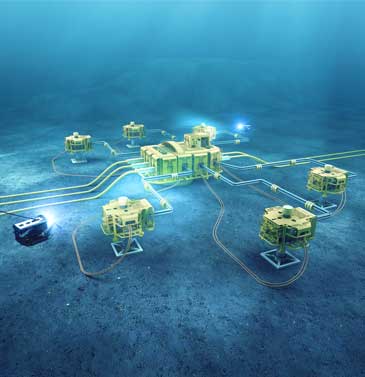 Subsea closeup illustration screen version. Credit: DNV GL
Subsea closeup illustration screen version. Credit: DNV GL Harris CapRock Communications
Harris CapRock Communications Douglas-Westwood (DW)
Douglas-Westwood (DW) COSL Innovator
COSL Innovator 2H Offshore
2H Offshore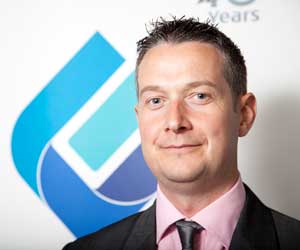 John Anderson, Exceed commercial director
John Anderson, Exceed commercial director NYC-based
NYC-based  LQT Industries, LLC
LQT Industries, LLC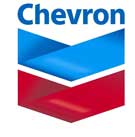 Chevron Corporation (NYSE: CVX) hosted its annual security analyst meeting in New York where executives reiterated priorities, expressed confidence in the company’s near term outlook and emphasized an advantaged position when markets rebound.
Chevron Corporation (NYSE: CVX) hosted its annual security analyst meeting in New York where executives reiterated priorities, expressed confidence in the company’s near term outlook and emphasized an advantaged position when markets rebound.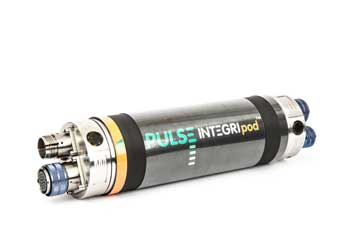 Pulse Structural Monitoring
Pulse Structural Monitoring Douglas-Westwood (DW) held their inaugural Business Breakfast event in London last week at Southwark Cathedral. The purpose of the event was to showcase DW’s latest research and to offer a network opportunity for their financial sector and energy industry clients.
Douglas-Westwood (DW) held their inaugural Business Breakfast event in London last week at Southwark Cathedral. The purpose of the event was to showcase DW’s latest research and to offer a network opportunity for their financial sector and energy industry clients. Ian Phillips, SPE Aberdeen Chairman with trophy designer Irina Viskanta
Ian Phillips, SPE Aberdeen Chairman with trophy designer Irina Viskanta Offshore accommodation and workspace specialist
Offshore accommodation and workspace specialist  Kongsberg Maritime
Kongsberg Maritime Deep Down, Inc.
Deep Down, Inc. Since 2008, the
Since 2008, the